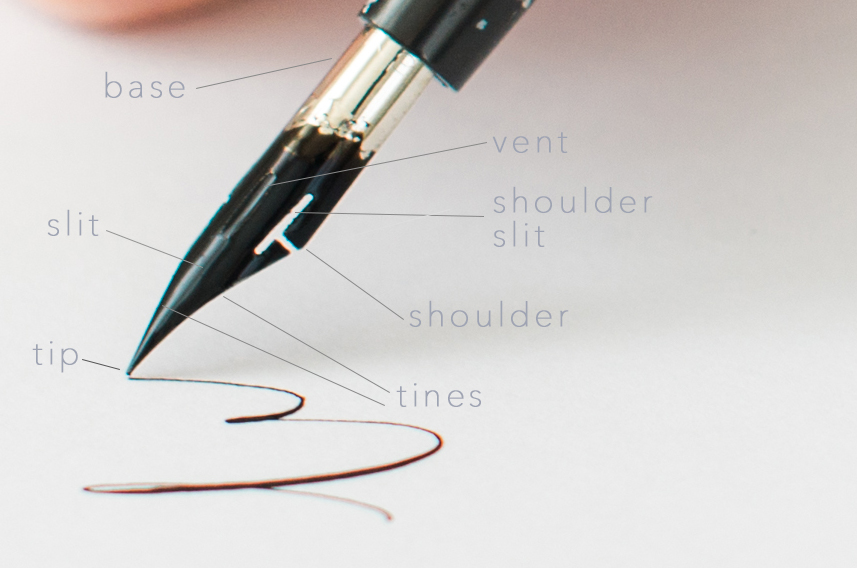In my last blog post I explained about calligraphy pens, how they work and the different types. Today let’s have a look at the nib itself.

Nibs are pointy little silver magic wands. A genius combination of design and gravity makes a pointed calligraphy nib one of my favourite inventions in the world.
The curve of the nib is what holds the ink up. It’s a simple trick of gravity, surface tension and viscosity – you can even ‘scoop’ ink up with your nib as if it were a spoon!

Modern calligraphy nibs are split down the centre, and the two halves of a nib are the ‘tines‘. Ink flows down the centre slit to make marks on the paper.
As pressure is applied to the tip of the nib, the tines split and it’s the distance between them which determines the width of your letterforms.
The shoulders of a nib affect flexibility. The broader the shoulders, the less flexible your nib will be. Some of my favourite nibs have shoulder slits – the Blue Pumpkin for example. Shoulder slits add flexibility by effectively narrowing the shoulders of the nib.
The final part of a nib is the vent. This is a tiny hole in the centre of the nib, designed for air and ink flow – but actually forming a magic little ‘window’ to indicate when ink is about to run out. Just before you need to re-dip your nib, the ink in the window will ‘pop’ like a bubble, leaving the window clear.

Buy a modern calligraphy starter kit and begin your calligraphy adventures today!